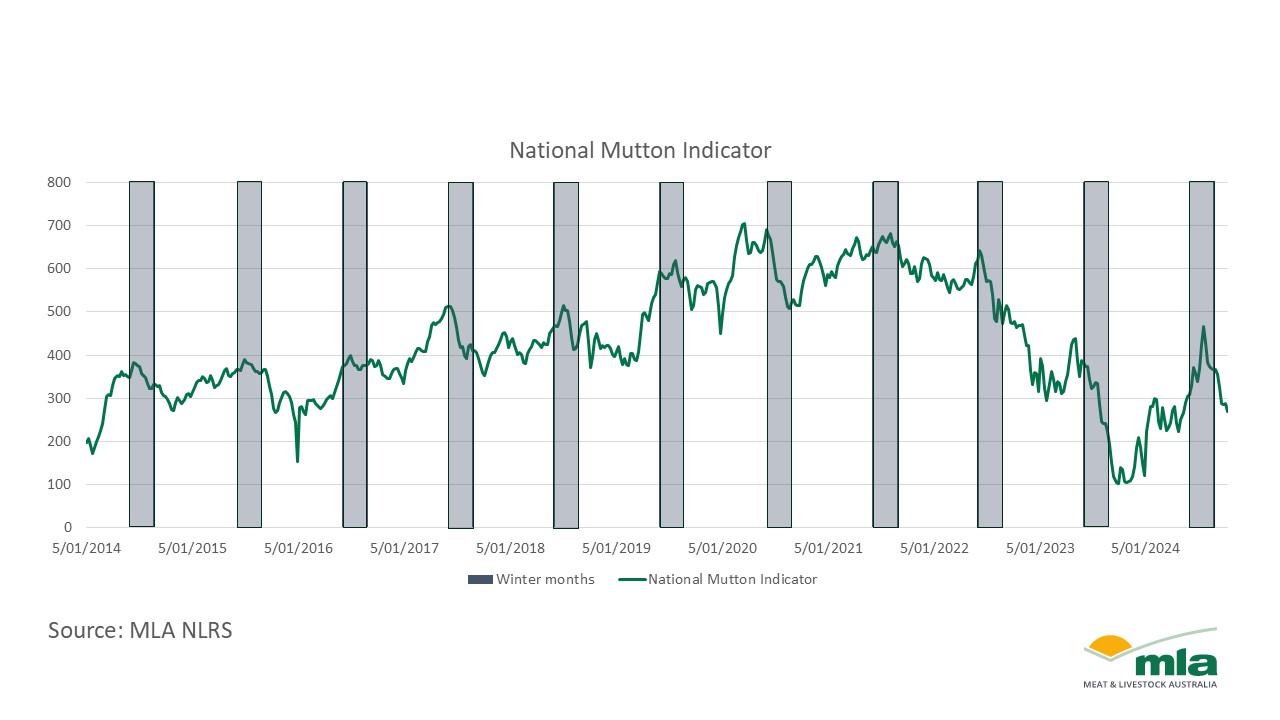Mutton prices return to long-term seasonal trends
Key points
- The National Mutton Indicator is one of the most consistently seasonal indicators in the NLRS.
- Since May 2024, there has been an ease in mutton prices.
- Current price movements are now following long-term seasonal trends.
The National Mutton Indicator has now recorded its 12th consecutive week of price decline. The current price is sitting at 269¢/kg carcase weight (cwt), the lowest level since early May, and 44% (211¢) below the five-year average. However, it is important to note this downward trend is not unusual for this time of year.
Mutton is one of the most seasonal indicators tracked by MLA through the National Livestock Reporting Service (NLRS). This is largely due to the highly seasonal supply of sheep entering the saleyards.
Historically, mutton prices tend to peak around June or July, as producers reduce supply to focus on lambing. Prices gradually decline throughout the spring flush and into summer. As young lambs are weaned and older ewes are culled, an increase in supply pressures the market, pushing prices down. Typically, prices reach their lowest point in the summer months; this pattern has been consistent for a long time.

However, the past five years have deviated from this typical pattern, with greater unpredictability in prices. In 2019, destocking was driven by drought and there was a surge in supply, shifting mutton price trends and causing prices to peak and fall earlier in 2020. In 2022 and 2023, market volatility reached unprecedented levels. The industry experienced its most severe mutton price collapse on record, with values falling 83% from 642¢/kg cwt in July 2022 to 103¢/kg cwt in October 2023, despite a brief, supply-driven recovery between February and April 2023.
In 2024, however, prices have followed traditional seasonal trends more closely. The National Mutton Indicator peaked in July at 466¢/kg cwt, although prices have remained below long-term averages due to elevated supply. Still, the general movement of prices has reflected historical patterns.
Looking ahead, sheep supply is expected to stay high, with forecasts indicating that sheep slaughter numbers will reach 10 million head by the end of 2024 and above 11 million through to 2026. Given this outlook, it's likely that the National Mutton Indicator will continue to follow seasonal trends, provided the current supply levels remain. We will closely monitor prices and saleyard throughput to determine whether 2024 will continue to mirror historical market movements.
Attribute to: Erin Lukey, MLA Senior Market Information Analyst



